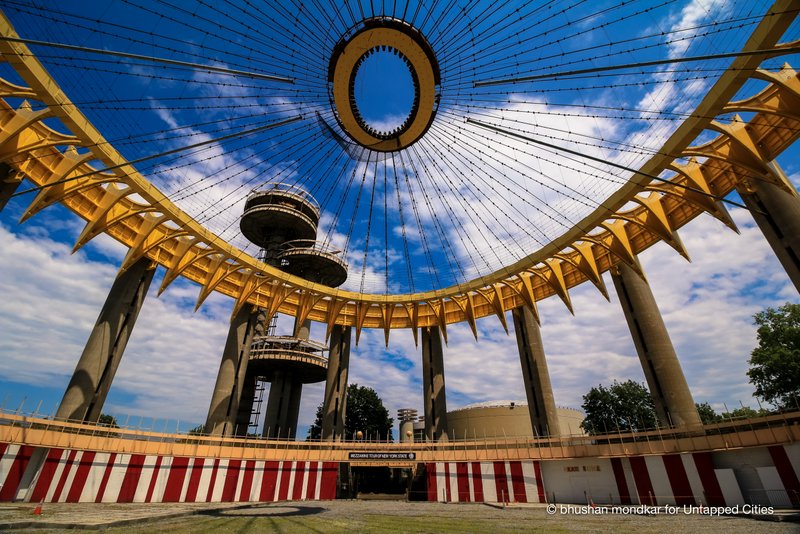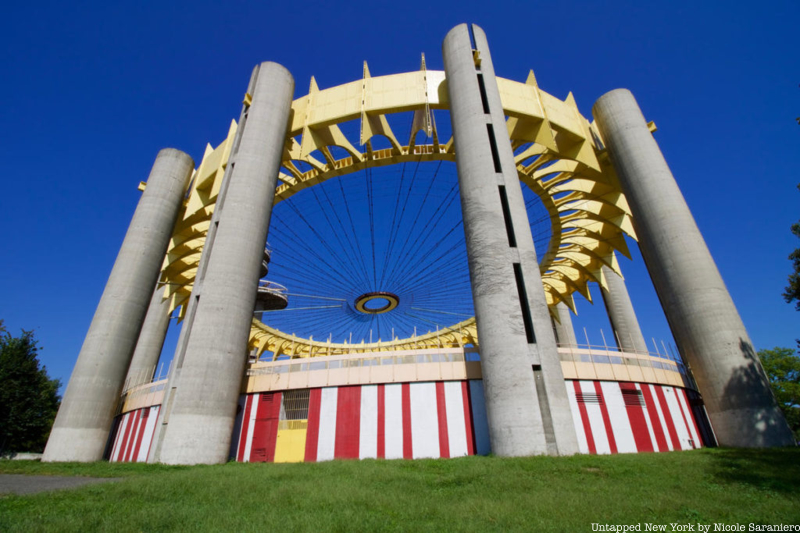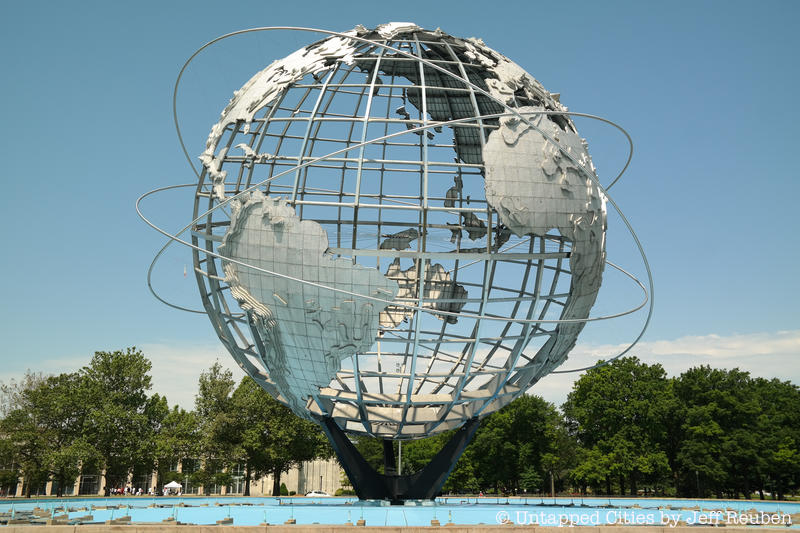
The New York State Pavilion has predominantly remained dormant since it closed in the 1970s. During its heyday, however, the futuristic structure once housed state exhibits and performances, serving as the “shining star” of the 1964-65 World’s Fair, which welcomed over 51 million people, according to reports. In the decades since then, the Philip Johnson-designed Pavilion has fallen into a state of deterioration, but recent renovation efforts are aimed at restoring this iconic New York City landmark to its previous grandeur and making it accessible to visitors once again. Here are 10 secrets we uncovered about the New York State Pavilion, which consists of the “Tent of Tomorrow,” three concrete Observation Towers, and the Theaterama.
1. The New York State Pavilion Was Built to Be Demolished

The 1964-65 World’s Fair was always meant to be a temporary affair. The same was true for the 1939-40 World’s Fair which preceded it. The iconic Trylon and Perisphere, which were the centerpieces of the fair, were both dismantled. During the installation of the 1964 fair exhibitions, all exhibitors were required to sign a lease that said that their pavilions would be demolished within 90 days of the fair’s closure in October 1965. While it was clear that most of the buildings had to go (some traveling to different states), letters uncovered by People for the Pavilion from the Rockefeller Archive Center reveal that there was extensive debate between officials over whether to save or demolish the New York State Pavilion.
One argument for its preservation was that it was “too expensive to tear down,” according to The Landmark Preservation Commission in 1995. Robert Moses foresaw a future where the Observation Towers were a great attraction. Ultimately, the structures were saved and did find alternative uses beyond the fair, at least for a short time (which you’ll discover soon!).






